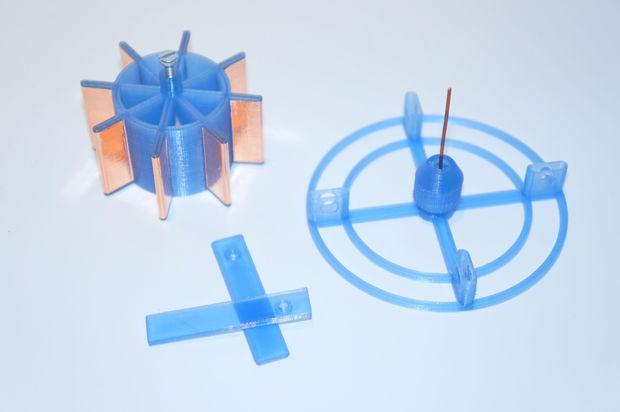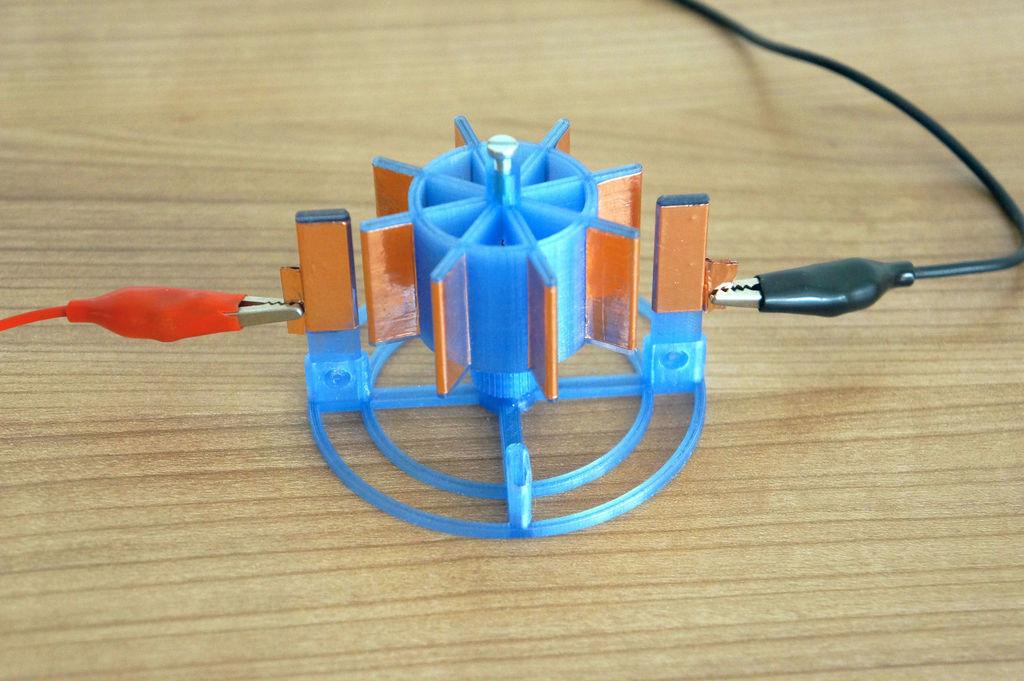As the quest to develop alternative and renewable energy sources continues, one of the promising options that has emerged–or reemerged, actually–is power generated by electrostatic motors. Instructables contributor “Joehan” submitted a design for a 3D printed electrostatic motor that’s easy to construct.
What’s an “electrostatic motor,” you ask? An electrostatic motor (also known as a “capacitor motor”) works differently than the conventional electric motor. The latter operates via the interaction between the motor’s magnetic field and winding currents to generate force within the motor. An electrostatic motor, in contrast, uses the same force that holds your clothes together when you pull them from the dryer–the attraction and repulsion of an electric charge–to generate energy. Since they don’t require magnets or copper windings or rare earth minerals, electrostatic motors are cheaper to build. Additionally, since the motor doesn’t use bearings or brushes, friction and, therefore, energy loss are minimal. The amount of energy generated isn’t that large (typically less than 100V) but it is steady.
Electrostatic motors–popular science fair projects but not widely employed–see use in microelectromechanical systems (MEMS) or very small devices, including nanotechnology. However, promising advances are being made in the further development of this technology and it is thought that it might first be put to more extensive use in wind turbine generators.
Electrostatic motors aren’t new. In fact, some early ones were developed by Andrew Gordon and Benjamin Franklin back in the mid-1700s. You can actually build an electrostatic motor from standard household items, as this Instructable demonstrates.
To construct your own 3D printed electrostatic motor, you’ll need the following materials, according to Joehan:
- 1x 3mm screw about 10mm long (for instance, an unused screw from an old PC)
- 1x 50mm wire (0.5-1mm)
- 1x aluminum foil or copper foil (such as self-adhesive aluminum tape for sealing or plain foil to glue)
- 1x HV power source (Wimshurst, Van-de-Graaff, Flyback Transformers)
- 3D printer and filament
The .stl files are available for download to print at home or via 3D Hubs or another supplier. You will print with 100% infill on standard printer settings and no support is required. The instructions are very simple and straightforward–although clearly you’re working with electricity, so if you’re not familiar with how an electrostatic motor works, you should prepare for this project by doing some precautionary research.
Joehan didn’t indicate to what purpose this device would be used, so we hope to hear more about this project and a prior one, a single-disc electrostatic generator. Perhaps this is one of those science fair type projects in which you build the thing so you can demonstrate how the process works and that certainly has its own rewards!
Let us know if you think this might be handy in a science fair or another more advanced use in the 3D Printed Electrostatic Motor forum thread over at 3DPB.com.
Subscribe to Our Email Newsletter
Stay up-to-date on all the latest news from the 3D printing industry and receive information and offers from third party vendors.
You May Also Like
Gorilla Sports GE’s First 3D Printed Titanium Cast
How do you help a gorilla with a broken arm? Sounds like the start of a bad joke a zookeeper might tell, but it’s an actual dilemma recently faced by...
Nylon 3D Printed Parts Made More Functional with Coatings & Colors
Parts 3D printed from polyamide (PA, Nylon) 12 using powder bed fusion (PBF) are a mainstay in the additive manufacturing (AM) industry. While post-finishing processes have improved the porosity of...
$25M to Back Sintavia’s Largest Expansion of Metal 3D Printing Capacity Since 2019
Sintavia, the digital manufacturing company specializing in mission-critical parts for strategic sectors, announced a $25 million investment to increase its production capacity, the largest expansion to its operations since 2019....
Velo3D Initiates Public Offering in a Bid to Strengthen Financial Foundations and Drive Future Growth
Velo3D (NYSE: VLD) has been among a number of publicly traded 3D printing firms that have attempted to weather the current macroeconomic climate. After posting a challenging financial report for 2023,...
































